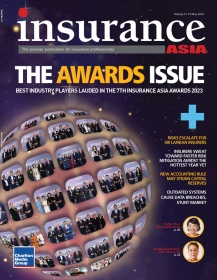 /Vlad Deep from Unsplash
/Vlad Deep from Unsplash
How are Insurance-Linked Investments profitable?
Schroders says ILS is primarily driven by natural events rather than corporate factors.
Insurance-linked investments (ILS) offer attractive yields and exhibit low correlation to traditional government debt instruments. Whilst insurance is primarily a risk management tool, it also serves as a profitable diversifier for investment portfolios, particularly during challenging economic climates, advised Schroders in an insights report.
ILS provide investors access to the insurance market, allowing them to participate in managing risk and potentially generating profits.
Through instruments like catastrophe bonds (cat bonds), insurers transfer a portion of their risk to capital market investors, who act as re-insurers, receiving premiums in exchange for assuming the risk of loss.
Unlike traditional corporate or sovereign bonds, cat bonds are structured differently. They are not directly exposed to the credit risk of the issuer, as their value is determined by the probability of defined risks occurring, such as natural disasters.
If triggering events don't occur within the agreed period, investors receive regular coupon payments. However, if specified events happen, the principal may be used to cover losses, impacting coupon payments.
ALSO READ: Joseph Chan touts Hong Kong as top ILS issuance centre
The performance of ILS is primarily driven by natural events rather than corporate factors, making it less correlated with traditional asset classes like stocks and bonds.
This low correlation offers several benefits for investors:
- Diversification: ILS offer low correlation with traditional assets, reducing the influence of market fluctuations and economic conditions on their performance. This makes them valuable diversifiers in portfolios.
- Attractive Yields: Due to the risks involved, ILS often provide higher coupon rates compared to traditional fixed-income securities, compensating investors for assuming insurance risk.
- Reduced Portfolio Risk: The non-correlated nature of ILS can help mitigate portfolio risk, acting as a hedge against broader market downturns.
- Income Generation: ILS offer potential income streams independent of interest rate fluctuations or dividend payments from stocks, with attractive coupon rates.
- Weather-Related Risks vs. Credit Risks: Investors in ILS swap credit risk for weather-related risks. This shift in risk profile provides diversification benefits, especially during economic downturns when credit risks tend to increase.
Overall, ILS present an opportunity for investors to diversify their portfolios, generate income, and mitigate risk in uncertain economic environments.























 Advertise
Advertise









